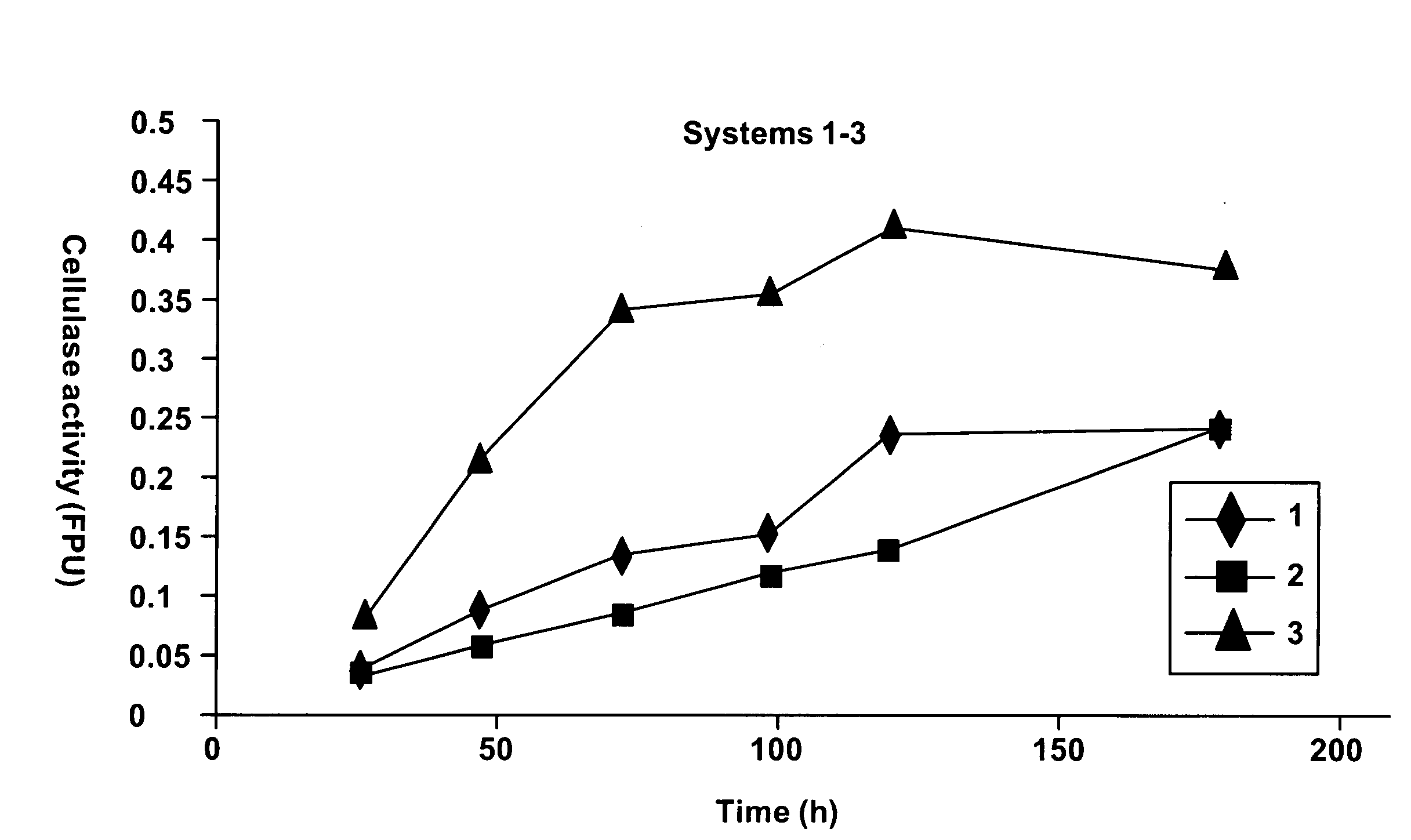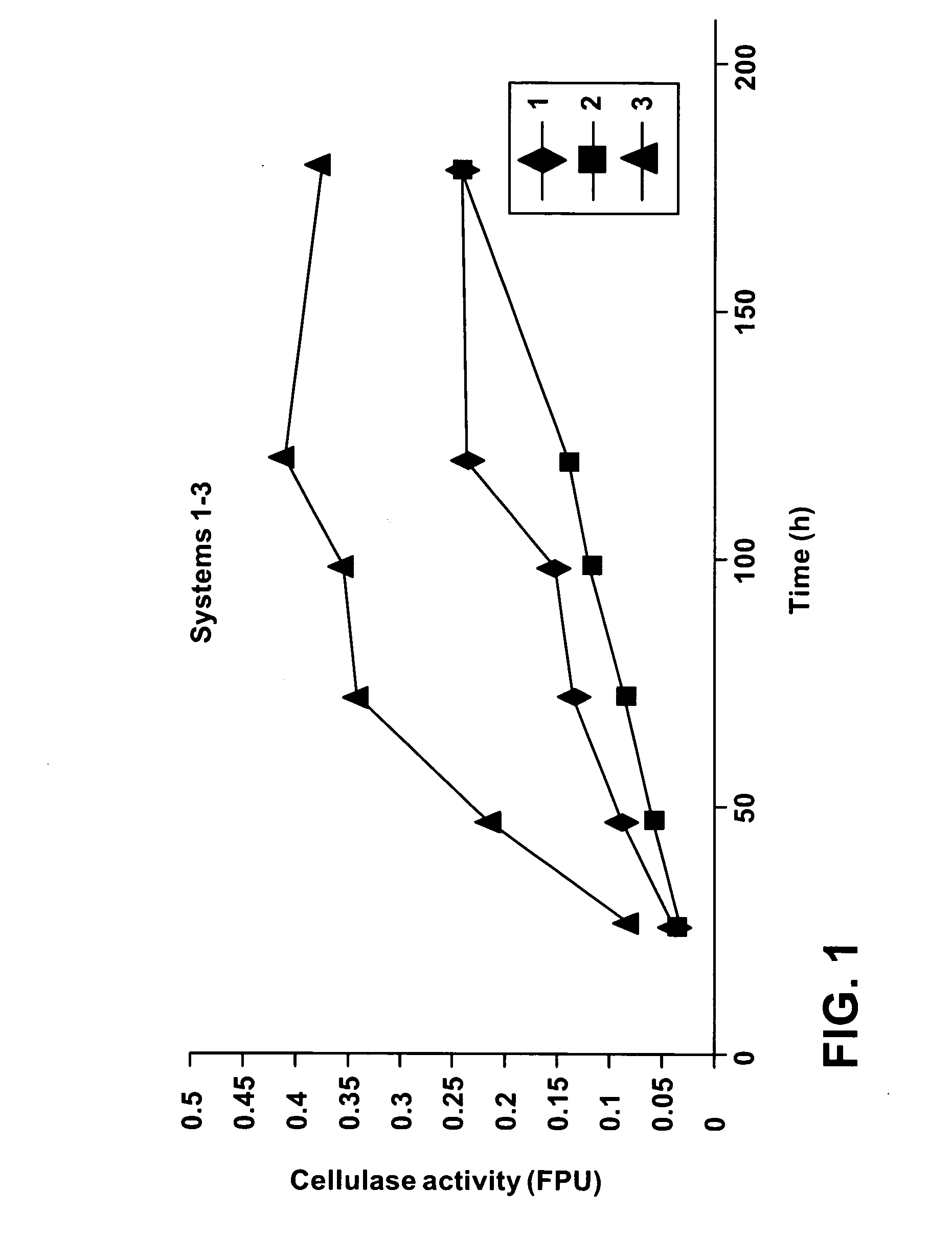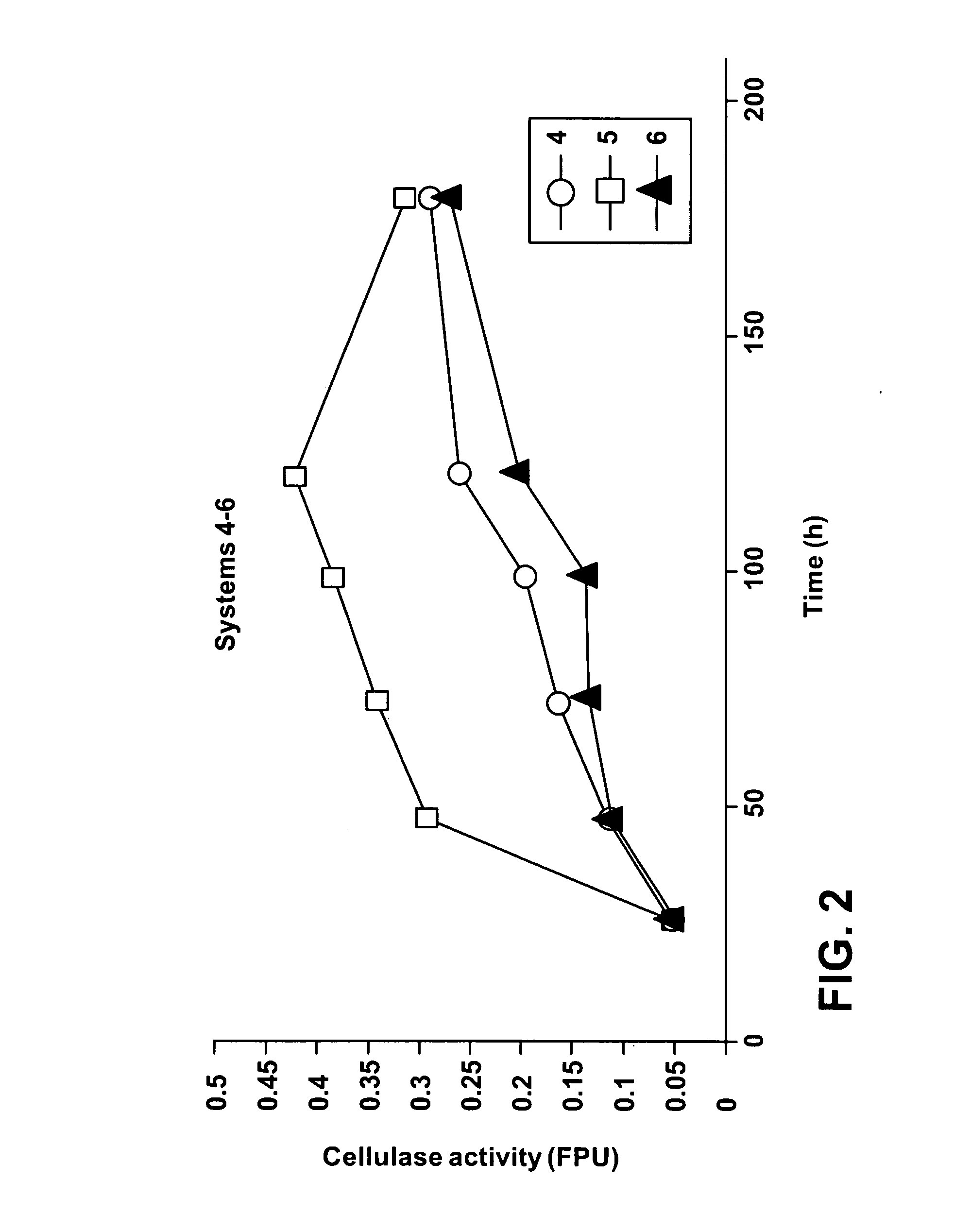Process for producing cellulase
a cellulase and cellulase technology, applied in the field of cellulase production, can solve the problems of difficult control, difficult operation and/or control of the production process, and high cost of the production process, and achieve the effects of easy control of the approach, serious ecological and environmental risks, and low cos
- Summary
- Abstract
- Description
- Claims
- Application Information
AI Technical Summary
Benefits of technology
Problems solved by technology
Method used
Image
Examples
examples 1-9
Candida bombicola and Trichoderma reesei Co-Cultures
[0044]Both sophorolipids and cellulase are secondary metabolites that are over-produced by non-growing cultures. The co-culture process is therefore designed to use resting (non-growing) cultures of Candida bombicola and Trichoderma reesei, by adding pre-grown cells to the media containing no N (nitrogen) source for growth. The experimental design is given in Table I:
TABLE IExample123456789System123456789CultureTrichoderma43.32.5(g / L)reeseiCandida11.72.5SubstrateGlycerol5(g / L)Vegetable2.55102.55102.5510oil
[0045]The two cultures, Candida bombicola and Trichoderma reesei, are first grown separately in media for 72 hours and then harvested by centrifugation. The two cultures are then mixed at three different ratios, 4:1, 2:1 and 1:1, in the 9 simultaneous systems studied, as shown in Table 1. Note that the total cell concentration is kept the same at 5 g / L to minimize the differences in other uncontrolled factors, such as the dissolve...
PUM
| Property | Measurement | Unit |
|---|---|---|
| Time | aaaaa | aaaaa |
| Ratio | aaaaa | aaaaa |
| Cell growth | aaaaa | aaaaa |
Abstract
Description
Claims
Application Information
 Login to View More
Login to View More - R&D
- Intellectual Property
- Life Sciences
- Materials
- Tech Scout
- Unparalleled Data Quality
- Higher Quality Content
- 60% Fewer Hallucinations
Browse by: Latest US Patents, China's latest patents, Technical Efficacy Thesaurus, Application Domain, Technology Topic, Popular Technical Reports.
© 2025 PatSnap. All rights reserved.Legal|Privacy policy|Modern Slavery Act Transparency Statement|Sitemap|About US| Contact US: help@patsnap.com



